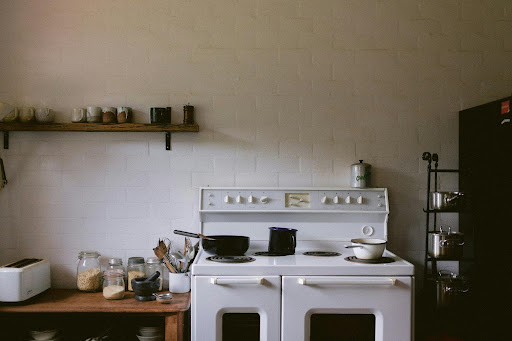
The kitchen is often a focal point of a home. It’s where families gather, where culinary experiments unfold, and, more often than not, the site of unexpected messes and wear. In such a high-traffic area, the materials you choose can make the difference between a kitchen that stands the test of time and one that quickly shows its age. The right material choice can lead to a culinary space that is both inviting and enduring.
Countertops: The Battle of Aesthetics and Functionality
Arguably, countertops are the most hardworking surfaces in any kitchen. Constantly exposed to knives, hot pots, and spills, resistance and maintenance ease should be top priorities. Granite has long reigned supreme with its natural beauty and resilience. However, it requires periodic sealing to avoid staining.
For those who lean towards minimal upkeep, quartz surfaces might be the torchbearer. Engineered from stone byproducts and resin, they offer the luxury of durability with virtually zero maintenance. On the other hand, wooden countertops bring warmth but demand frequent oil treatments to fend off water damage. Laminates, while affordable, can delaminate if exposed to moisture — making them a short-lived choice.
Beyond aesthetics, the choice of countertop materials can be an investment in convenience and practicality. Consider also the taste for stone’s cool touch versus a wooden surface’s warmth, especially in regions with varying seasonal temperatures. Kitchen islands with mixed materials, like a marble top paired with a butcher block, offer the best of both worlds in terms of function and style.
If you’re considering a change, the best option comes from experts at Superior Stone and Cabinet. They can help you upgrade your kitchen counters to better suit your taste and needs. Exploring options that blend durability with design could enhance your kitchen’s functionality and aesthetic appeal.
Cabinetry: A Quiet Foundation
The cupboards and doors often go unnoticed until they fail. To prevent premature wear, material choice is crucial. Solid wood kitchens exude tradition and reliability, but can warp with consistent humidity changes.
For an all-weather choice, medium-density fiberboard (MDF) offers a stable and cost-effective solution. It’s smooth and perfect for painted finishes, but can chip. On the premium end, plywood cabinetry provides excellent moisture resistance and longevity, making it an appealing investment for the home chef.
In addition to the material itself, consider the hardware’s quality used in cabinetry. Hinges and handles that witness regular hands-on interaction play a vital role in the longevity and tactility of cabinets. Soft-close mechanisms have become a favored feature, reducing noise and preserving the integrity of both doors and drawers over time.
Flooring: The Support Underfoot
Choosing the right kitchen flooring incorporates a balance of style and resilience. Tiles are a kitchen staple due to their waterproof credentials and plethora of design choices. Ceramic tiles, particularly, offer an extended lifespan and can mimic more costly materials like marble.
Wood, with its timeless appeal, adds warmth but is vulnerable to moisture. It demands diligent sealing and protection against potential spills. Vinyl planks, meanwhile, are gaining traction thanks to their affordability and waterproof nature. When selected wisely, they can emulate the charm of wood without its drawbacks.
The appeal of natural stone flooring, such as travertine or slate, has gained traction due to its durability and earthy design palette. While these materials require more attention to sealing, their aesthetic and strength can transform a kitchen space into a warm and inviting area. Keeping slip resistance in mind, textured finishes can provide added safety for high-traffic kitchen areas.
Sink and Faucets: Where Form Meets Function
The sink and its companion faucet play pivotal roles in everyday kitchen rituals. Stainless steel maintains its position as a reliable favorite for its unmatched resistance to rust and stains. Its flexibility comes from offering various sizes and price points, fitting seamlessly into contemporary homes.
In contrast, composite sinks — blends of resin and stone dust — are proving worthy contenders with their rugged nature and color choice variety. In faucets, pure brass components deliver durability but often come at a premium. Alternatives like stainless steel faucets offer good corrosion resistance without breaking the bank.
For those considering aesthetic coherence, matching sink and faucet finishes can harmonize your kitchen’s visual appeal. Pull-down or pull-out faucet designs offer convenience for washing deep pans or rinsing fresh produce, easing daily kitchen tasks. Innovative features, such as water-efficient designs, ensure usage is both effective and conscientious.
Final Thoughts
Constructing a kitchen destined for longevity is a dance between aesthetics, functionality, and material performance. Every choice reflects the lifestyle and needs of its users. In this, precision and informed insight become your guiding stars. With the right foundation, the kitchen does more than preserve its visual charm — it becomes a resilient cornerstone of daily life.